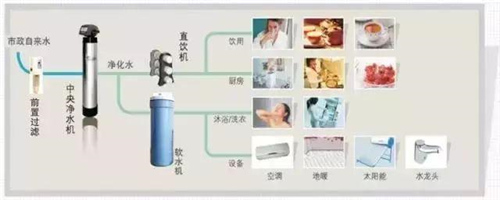Water is essential for life, and ensuring access to clean, safe drinking water has always been a top priority. However, with increasing water pollution, this issue has become more urgent than ever. As a result, water purifiers have gained significant attention in recent years. But how much do you really know about them? Today, we’ll explore some of the most common questions people ask about water purifiers.

**Can I install a water purifier even if my home is already decorated?**
While it’s ideal to plan for a water purifier installation during the initial renovation, many homeowners choose to add one after their kitchen is already finished. Fortunately, installation is still possible without major disruptions. Installers typically connect the purifier to an existing kitchen faucet using a T-connector with a switch, and then attach the system under the sink or inside the cabinet. This method doesn’t interfere with your existing faucet or damage your decor. It’s still recommended to reserve space or prepare the plumbing in advance for smoother installation.
**When should I replace the filter?**
Filter replacement schedules vary depending on the type of filter and local water conditions. Here’s a general guide:
- **First stage: PP cotton** – Typically lasts 3–6 months, depending on water quality.
- **Second stage: Granular activated carbon** – Usually lasts 6–12 months.
- **Third stage: Composite activated carbon or cationic resin** – Also around 6–12 months.
- **Fourth stage: Ultrafiltration membrane or RO reverse osmosis membrane** – Lasts 2–3 years.
- **Fifth stage: Taste modulation activated carbon** – Usually needs replacement every 6–12 months.
In addition to these timelines, here are four signs that indicate it’s time to change your filter:
1. If the water flow from your purifier decreases significantly, it may be due to a clogged filter.
2. If the purified water flows too quickly, it could signal damage to the RO membrane.
3. A bad taste or odor in the water may mean the filters are no longer effectively removing impurities.
4. Even if the timer hasn’t reached its limit, if the filter has been in use for 80% of its expected lifespan, it’s wise to replace it.
**What are the benefits of using a water purifier?**
1. A water purifier provides clean, drinkable water directly from the tap, eliminating the need to boil water and saving time.
2. Unlike boiled water, which only removes large particles and certain metals, a water purifier can eliminate a wide range of contaminants, including bacteria, viruses, and small molecules, ensuring better water quality.
3. Water purifiers are compact and can be installed discreetly in the kitchen, making them a space-saving alternative to traditional water dispensers.
Whether you're looking to improve your family's health or simply want more convenience, a water purifier can be a valuable investment. Understanding how it works and when to maintain it will help you get the most out of your device.
The Drone Gasoline Engine is an internal combustion engine specifically designed to power unmanned aerial vehicles (UAV) using gasoline (petrol) as fuel.
These engines are engineered to be lightweight yet powerful, providing the necessary thrust and endurance for extended flight missions.
They incorporate advanced technologies such as fuel injection systems, ignition controls, and lightweight materials to optimize performance and efficiency while ensuring reliability in various operational conditions.
Drone Generator Motor,Engines used on Drones,UAV Drone Gasoline Engine
Jiangsu Yunbo Intelligent Technology Co., Ltd , https://www.fmodel-ai.com